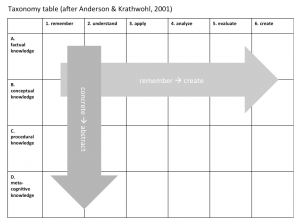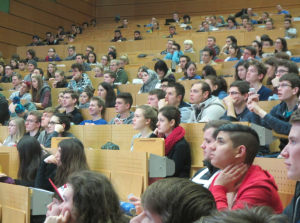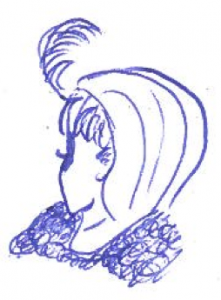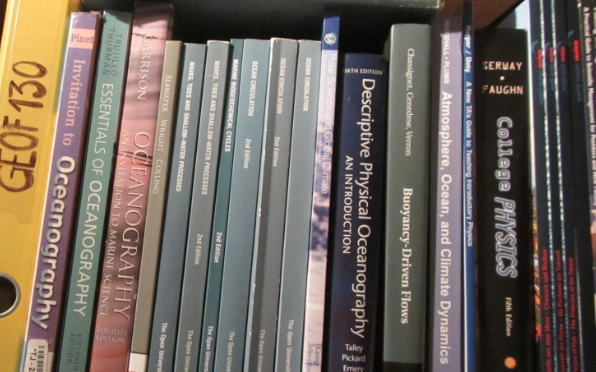Grouping students together for collaborative work is easy, but how do we make them work as a team?
Collaborative learning is often propagated as the ultimate tool to increase learning outcomes, help students learn at a deeper level and remember what they learned for longer, and become better team players as professionals. But many people I work with perceive “group work” as a hassle that costs a lot of time, lets weak or lazy students hide behind others, breeds conflict, and is deemed more of a “kindergarten” method than worthy of being used at a university.
I recently found a paper that addresses all those issues and – even better – provides instruction on how to organize student team work! “Turning Student Groups into Effective Teams” by Oakley et al., 2004. I’ll give a brief summary of their main points below.
Should you even form teams?
Do you form them or let them form themselves? The authors are clear on this point:
“Instructors should form teams rather than allowing students to self-select.” As we’ve seen over and over, if students are allowed to find themselves together in the groups they’d like to work in, weak students will likely end up working together, and strong students will end up working together. This is, for obvious reasons, not optimal for the weak groups, but also the strong groups don’t benefit as much from the assignments as they could when working in mixed groups: Strong students tend to divvy up the work among themselves and put pieces together in the end without much discussion of how the individual pieces fit, ignoring the bigger picture. Forming student groups rather than having them self-select will raise objections from the students, but it is probably worth facing that discussion anyway.
Then how do you form groups?
The authors present two guidelines, based on previous research:
1. Make sure groups are diverse in ability and that they have common free time slots outside of class so they have a chance to meet up.
2. Make sure at-risk minority students are well included in their groups
Team sizes, they say, are optimally between 3 and 5 members.
The second guide line on at-risk minority students is interesting: In the case of women being the minority you are currently concerned about, they suggest to form groups with all men, all women, two of each, two or three women and one man, but not one woman and two or three men, because the isolation that woman might feel within her team could reinforce the feeling of isolation at university.
And what data do you need to form groups?
This is where I am not sure the authors’ advice can be applied to our situation. Of course, it is desirable to know grades in previous courses etc, but collecting that data is problematic in our legal system.
And what if I want to re-form groups?
The authors announce that they will re-shuffle after 4-6 weeks unless they get individual signed requests to stay together from all team members. Which they report they do from most teams except the really dysfunctional ones. They also report that difficult (domineering or uncooperative) team members usually behave a lot better in the new teams.
So now we have groups. But how do we build effective teams?
The authors say “With a group, the whole is often equal to or less than the sum of its parts; with a team, the whole is always greater.”, so investing into team building is definitely worthwhile. The fist thing they recommend is to
-> establish expectations
This consists of two steps: Set out clear guidelines and have team members formulate a common set of expectations of one another. The authors provide forms to help guide the process, a statement of policies and an agreement on expectations. The former gives guidelines of how good teamwork should be done, the latter is a form that students sign and hand in.
A nice tip is to have students name their teams, maybe based on common interests, to help build identity in the team.
-> give instructions on effective team practices
In order for students to learn to work in teams effectively, the authors give several pieces of advice that they tell students:
– Stick to your assigned roles! It will make teamwork run more smoothly, plus each roles comes with a skill set that you are expected to practice while filling that role, so don’t cheat yourself out of that learning experience
– Don’t “divide and conquer”. If you split up the work and only stick it back together in the end, you won’t learn enough about all parts of the project to fully understand what we want you to understand.
– Come up with solutions individually and then discuss them as a team. If you are always listening to the fastest person on your team coming up with ideas, you won’t get the practice yourself that you need later.
Dealing with problematic team members
Have you ever been on a team where everybody pulled their fair share of the weight, nobody tried domineering the group, nobody refused to work in the team, and everybody had the same goal? Right, me neither. So what can you do?
The authors suggest handing out a short text on “coping with hitchhikers and couch potatoes on teams” and ask students to write a short essay on it. Having them write something about the text makes sure they have actually read it – and maybe even thought about it. The authors state – and I find this super interesting even though not surprising – that “probably the best predictor of a problematic team member is a sloppy and superficial response to this assignment.”
-> firing students from teams, or students quitting
The authors present a model of “firing” problematic students from teams, or individual students resigning, where the whole group has to go through a counseling session with the instructor. Both parties learn to actively listen, repeating the complainer’s case back to the complainer. This, the authors say, almost always resolves the problem because by verbalizing someone else’s position, a reflexion process sets in. If things are not resolved, however, a week later a letter is sent notifying everybody on the team and the instructor of the intention of firing or quitting. A week later, if things haven’t improved, a second letter is sent, again to everybody on the team plus the instructor, finalizing the decision. Apparently this hardly ever happens because things have resolved themselves before.
For those students that do get fired there are several possible models: They can either get zeros on the team assignments for the rest of the year, or find another team that is willing to take them on. The authors point out the importance of having those rules written out in the time and age of lawsuits.
-> the crisis clinic
Another measure that the authors suggest is to occasionally run “crisis clinics”, i.e. short sessions on problematic behaviors, like for example hitchhiking, and putting students together to brainstorm how to deal with those issues. Collecting ideas serves two purposes: To show hitchhikers how frustrated the rest of the group might get with their behavior, and also to equip everybody with the strategies to deal with that kind of behavior.
But it is also important to point out to students that if they continue putting a hitchhiker’s name on the group assignment, they can’t complain later.
Puuuuh. The authors continue on, talking about peer grading and going through a long list of FAQs, but I think for today I’ve written enough. But check out the paper, there is so much more in there than I could talk about here!
—
Barbara Oakley, Rebecca Brent, Richard M. Felder, & Imad Elhajj (2004). Turning Student Groups into Effective Teams New Forums Press, Inc., P. O. Box 876, Stillwater, OK






